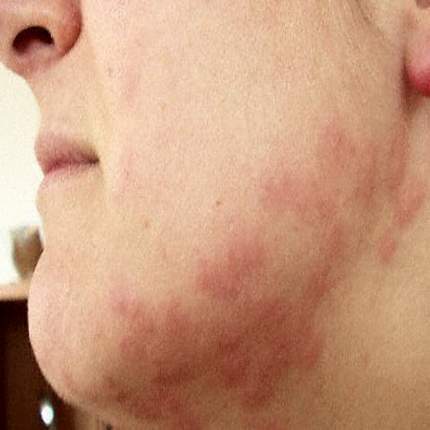What's in this article?
Dust mite allergy Overview
Dust mite allergy is an allergic reaction to tiny bugs that commonly live in house dust. Signs of dust mite allergy include sneezing and runny nose. Many people with dust mite allergy also experience signs of asthma, such as wheezing and difficulty breathing.
Dust mites, close relatives of ticks and spiders, are too small to see without a microscope. Dust mites eat skin cells shed by people, and they thrive in warm, humid environments. In most homes, bedding, upholstered furniture and carpeting provide an ideal environment for dust mites.
Steps to reduce the number of dust mites in your home can often control dust mite allergy. Medications or other treatments may be necessary to relieve symptoms and manage asthma.
What Causes Dust Allergies?
It sounds nasty, but it’s true: One piece of dust can contain pet dander, pieces of dead cockroaches, and mold spores, along with dead skin and dust mites.
Both cockroaches and pet dander are common allergy triggers, too. Cockroach waste, saliva, and body parts are a problem in some homes, particularly in the southern U.S.
Dust Mite Allergy Bedding
Bedding provides the ideal breeding ground for dust mites. Not only is most bedding the perfect temperature and humidity for dust mites, the people curled up in it at night provide an unlimited food supply for the hungry beasts.
Fortunately, it’s not a losing battle for those with allergies. An allergy sufferer can take the following steps to make sure he or she is sleeping alone (or at least without dust mites):
- Use allergen-proof bed covers on the mattress, box spring, and pillows. Zippered ones are best. Their tightly woven fabric prevents dust mites from getting a foothold in beds.
- Wash all bedding including sheets, pillowcases, blankets, and bed covers in hot water at least once a week. Dry in a hot dryer as well.
Dust mite allergy Symptoms
Dust mite allergy symptoms caused by inflammation of nasal passages include:
- Sneezing
- Runny nose
- Itchy, red or watery eyes
- Nasal congestion
- Itchy nose, roof of mouth or throat
- Postnasal drip
- Cough
- Facial pressure and pain
- Swollen, blue-colored skin under your eyes
- In a child, frequent upward rubbing of the nose
If your dust mite allergy contributes to asthma, you may also experience:
- Difficulty breathing
- Chest tightness or pain
- An audible whistling or wheezing sound when exhaling
- Trouble sleeping caused by shortness of breath, coughing or wheezing
- Bouts of coughing or wheezing that are worsened by a respiratory virus such as a cold or the flu
A dust mite allergy can range from mild to severe. A mild case of dust mite allergy may cause an occasional runny nose, watery eyes and sneezing. In severe cases, the condition may be ongoing (chronic), resulting in persistent sneezing, cough, congestion, facial pressure or severe asthma attack.
How Can I Prevent Symptoms?
The best strategy is to limit your exposure to dust.
Start in the bedroom, where you probably spend the most time. Large numbers of dust mites can gather in mattresses, bedding, and upholstered furniture.
Wear a mask while cleaning, too.
Treatment of Dust mite allergy
Minimizing an allergic person’s exposure to dust mites is the best treatment option, but if that doesn’t work, several over-the-counter and prescription medications are available that can help relieve the symptoms of a dust mite allergy:
- antihistamines, such as the prescription Allegra and the over-the-counter Claritin, can help relieve sneezing, runny nose, and itching by minimizing the immune system’s response
- nasal corticosteroids such as Flonase or Nasonex reduce inflammation while offering fewer side effects than their oral counterparts
- decongestants, such as Sudafed or Afrin, shrink tissues in nasal passages, making it easier to breathe for many allergy sufferers
- medications that combine an antihistamine and decongestant, such as Actifed or Claritin-D
Other treatments that may provide relief include cromolyn sodium, leukotriene modifiers (Singulair), and immunotherapy (allergy shots). Daily nasal lavage (rinsing the nasal passages with warm salt water) is an effective way to clear allergens from the sinuses, and can be performed with either a squeeze bottle or neti pot.





